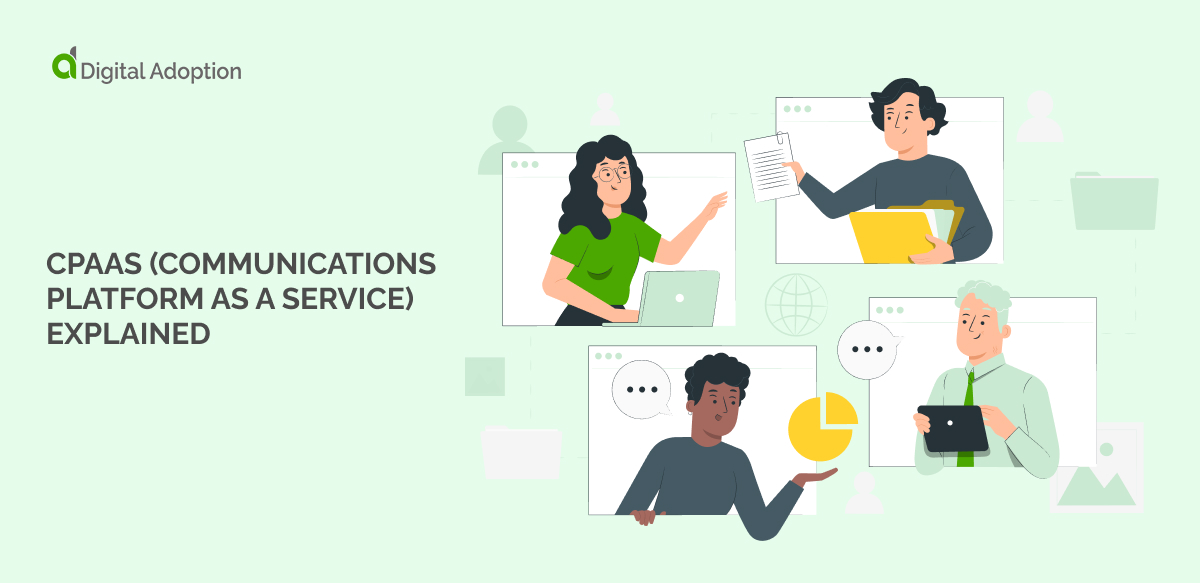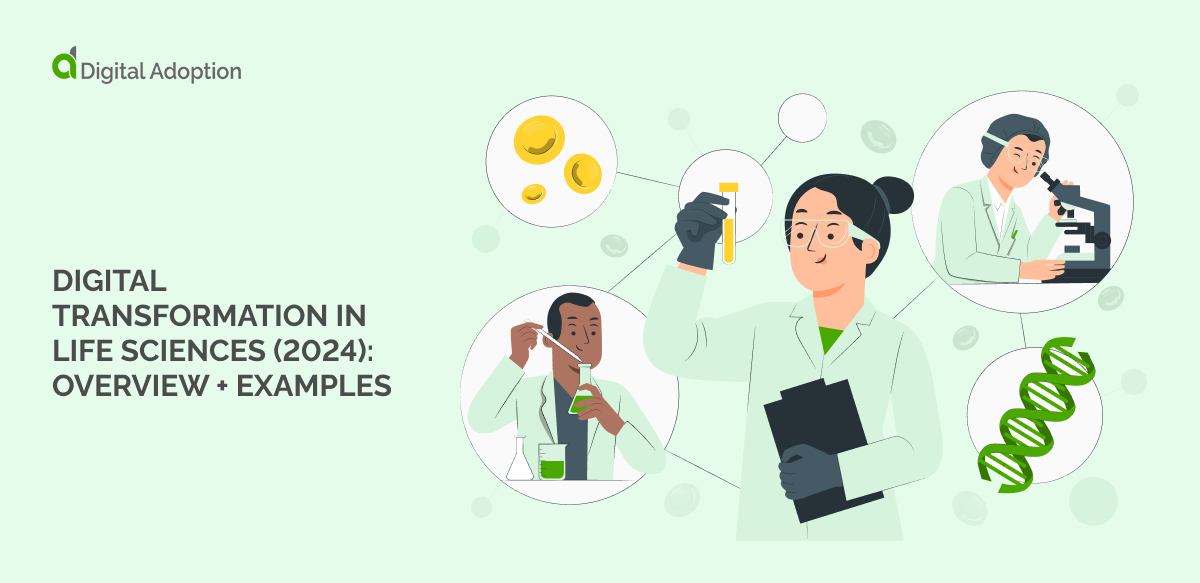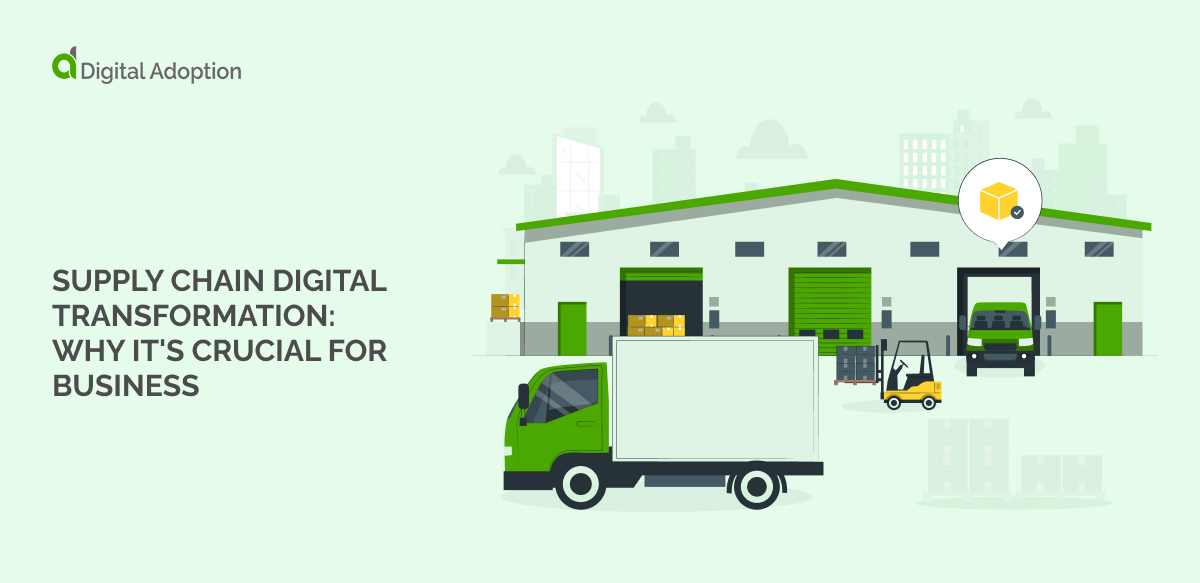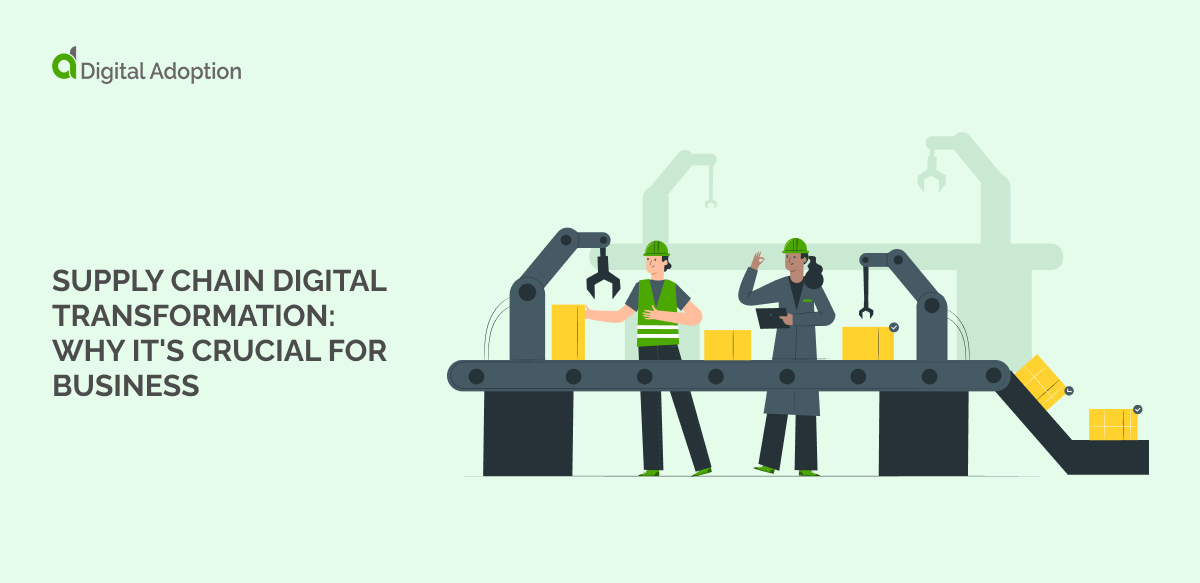The transformative potential of cloud solutions, most notably their scalability, flexibility, and cost-effectiveness, are driving factors behind their growing adoption across business ecospheres.
According to the latest predictions from Gartner, global spending on public cloud services is set to rise by 20.7%, reaching nearly $600 billion in 2023. This increase follows an expenditure of $490.3 billion in 2022 and surpasses the growth forecast of 18.8% for that year.
A particular sector within the cloud industry that’s creating a significant impact is Communications Platform as a Service (CPaaS).
This nascent field is reinvigorating the communications and cloud industries by directly facilitating real-time communication capabilities, such as voice, video, and messaging, into existing software applications.
Statistics from MarketsandMarkets reaffirm CPaaS‘s prospective industry impact, with the market valued at USD 12.5 billion in 2022 and projected to nearly quadruple to $45.3 billion by 2027 — registering a CAGR of 29.4%.
Without these critical platforms that facilitate seamless communication and collaboration, even the most proficient software cannot fully optimize productivity. Therefore, businesses must incorporate comprehensive communication solutions to truly harness the power of their enterprise software.
In this article, we will delve into Communications Platform as a Service (CPaaS), exploring its definition and understanding its value in the age of digital adoption. We will uncover the benefits of utilizing CPaaS, highlighting how it enhances customer interactions and improves overall communication strategies.
Additionally, we will examine how CPaaS works, providing insights into its cloud-based infrastructure and the integration of Communication APIs. Read on to discover the transformative power of CPaaS and its role in reinvigorating communication in the digital arena.
What is Communications Platform as a Service (CPaaS)?
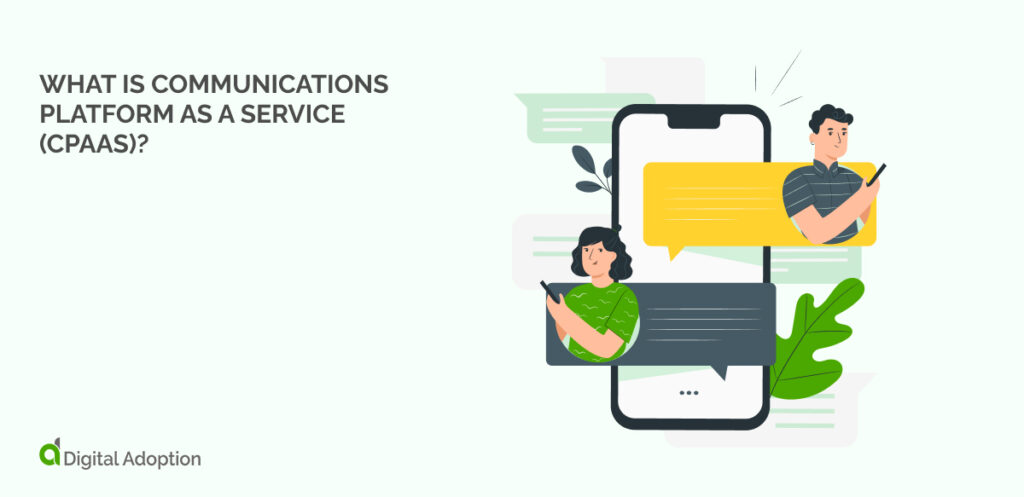
Communications Platform as a Service (CPaaS) is a transformative technology reshaping enterprise communication. It’s a cloud-based platform that lets developers seamlessly add real-time communication features to their applications without extensive backend development or infrastructure.
CPaaS provides an all-inclusive framework where developers can use pre-made APIs to construct robust communication features. This allows enterprise apps to integrate with various communication channels, such as voice, video, and messaging.
The adaptability of CPaaS is also noteworthy. It can be integrated into existing systems with minimal disruption, providing businesses with enhanced communication capabilities without requiring significant changes to their current infrastructure.
Understanding the value of CPaaS
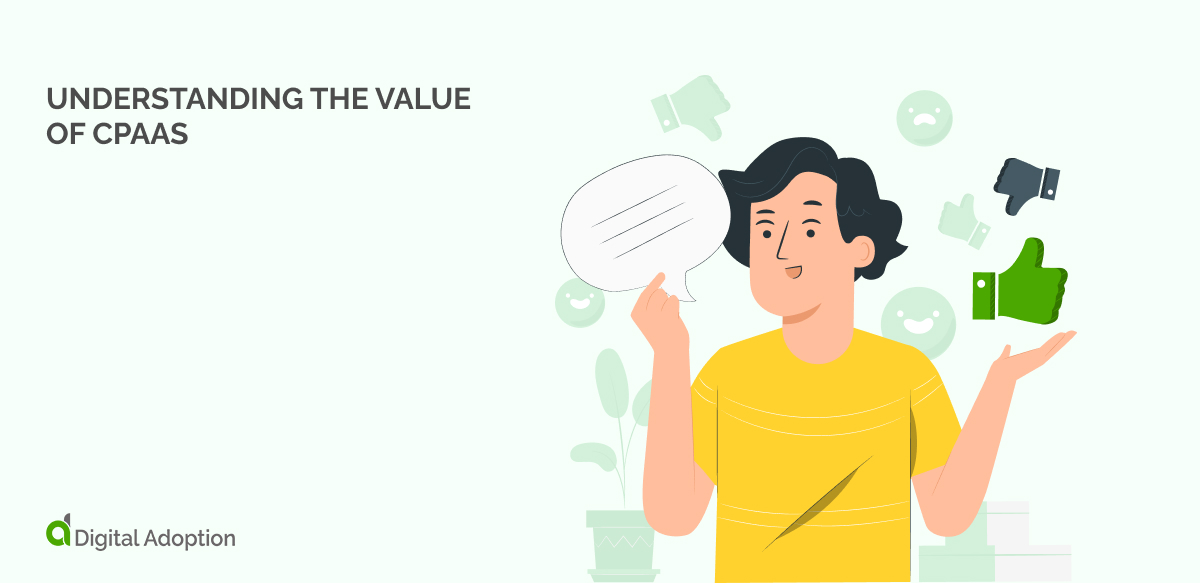
Research shows that spending on cloud services reached a record high of $178 billion in 2021, indicating the growing recognition of cloud technology’s potential amongst enterprises.
While large-scale enterprises might be leveraging highly efficient software solutions currently proliferating the market, the full potential of their productivity often remains untapped.
In many instances, employees use external communication tools such as Gmail for email correspondence or Zoom for video conferencing to disseminate relevant information within a specific application.
This shortfall is largely due to the need for robust internal communication tools, leading them to rely on these popular platforms to ensure smooth communication flow.
Real-time communication (RTC) is crucial to enterprise application communication capabilities. RTC refers to any live telecommunications method where all users can interact instantaneously with minimal latency. This means that information is exchanged almost concurrently between the sender and receiver, which is vital for efficient enterprise communication.
The evolution of Real-Time Communication (RTC) features within enterprise application development often needs to catch up when contrasted with the swift advancements in fields such as cloud infrastructure, data analytics, and artificial intelligence.
Incorporating a CPaaS solution addresses RTC barriers, allowing businesses to bolster their communication capabilities, paving the way for heightened collaboration and productivity, and fostering a more streamlined and effective work ecosystem.
As such, enterprises have become increasingly aware of the immense value that a comprehensive CPaaS solution brings—particularly in its ability to amplify the effectiveness of their existing enterprise software to its maximum potential.
What are the benefits of using a CPaaS?
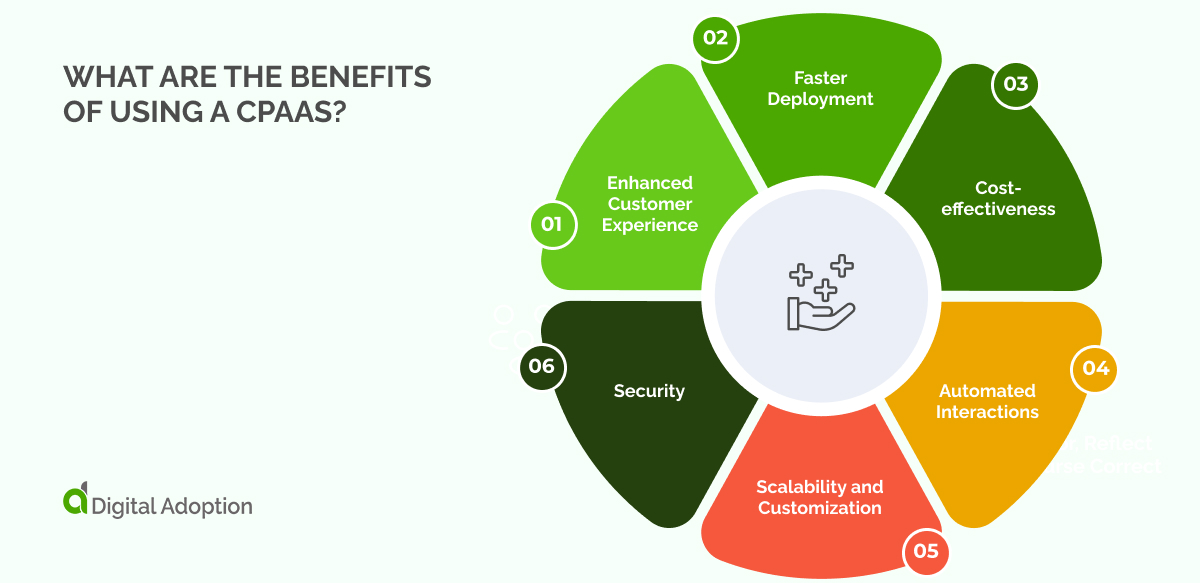
CPaaS is redefining the boundaries of real-time communication, offering many benefits that enhance customer interactions, streamline operations, and propel businesses into new digital verticals. Let’s take a closer look at these impressive advantages.
- Enhanced Customer Experience: CPaaS allows businesses to create a more interactive and personalized user experience. For example, it enables real-time communications like chat, voice, and video within applications source.
- Faster Deployment: With CPaaS, businesses can quickly and easily deploy communication features in their applications, saving time and resources source.
- Cost-effectiveness: CPaaS eliminates the need for businesses to build and maintain their communication infrastructure, leading to significant cost savings.
- Automated Interactions: CPaaS allows businesses to automate interactions, such as alerts, notifications, and reminders, improving efficiency and consistency source.
- Scalability and Customization: With CPaaS, businesses can easily scale up or down based on their needs. They also can customize the communication features in their applications source.
- Security: CPaaS can provide robust security measures, protecting against data leaks, fraud, and other threats. This is particularly important for industries that handle sensitive data, such as finance and banking.
How does CPaaS work?
At its heart, CPaaS operates using communication Application Programming Interfaces (APIs) and Software Developer Kits (SDKs). These tools allow developers to incorporate real-time communication features such as voice, video, and messaging directly into their applications, ranging from mobile apps to web services.
The APIs, housed in the cloud, handle complex processes, including connectivity, security, and scalability. This allows for a high level of customization, equipping businesses with the ability to tailor their communication channels to meet specific needs. Furthermore, CPaaS offers services like video conferencing and voice calls, enhancing the functionality of the core application without compromising it.
CPaaS typically provides its services following a subscription-based model. This model allows companies to avoid vendor lock-in, as they can switch providers if their business requirements change over time.
In addition to providing the platform, CPaaS providers frequently offer product support. This includes technical support to troubleshoot issues and assistance with implementing and managing the platform, ensuring businesses can effectively utilize the service.
Looking ahead: The future of CPaaS
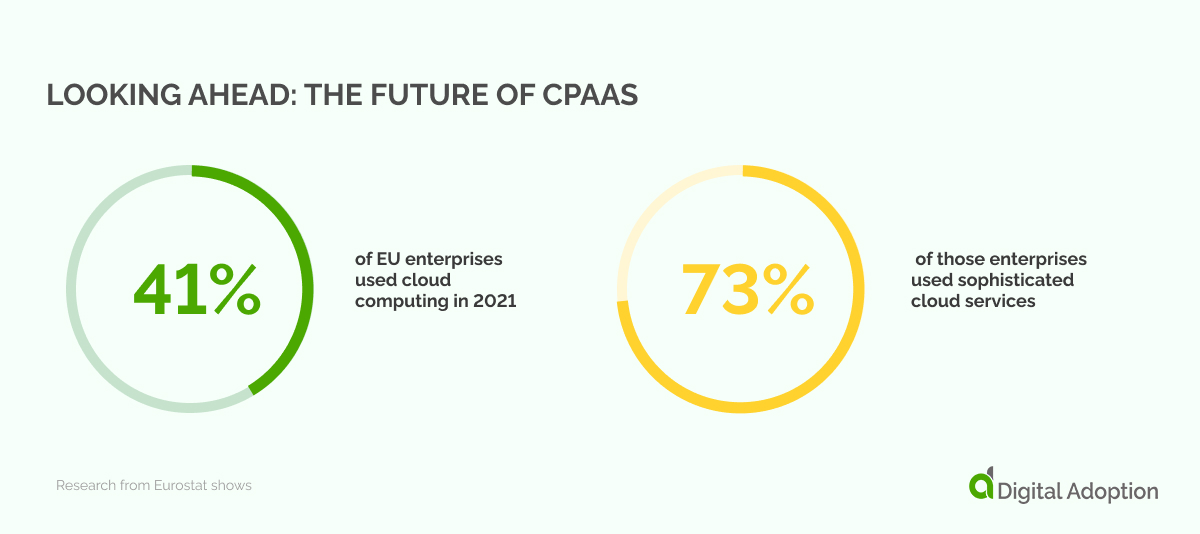
Research from Eurostat shows 41 % of EU enterprises used cloud computing in 2021, and 73 % of those enterprises used sophisticated cloud services. Compared with 2020, cloud computing increased by five percentage points.
Within this sector, CPaaS emerges as a game-changer for enterprises requiring more advanced and flexible communication solutions than traditional telecommunication systems can offer.
This presents a significant opportunity for service providers to capture a growing market. They can cultivate long-term customer relationships by offering CPaaS solutions that are customizable, scalable, and backed by comprehensive support.
Marking the beginning of a new era in communication development, enterprises, service providers, and customers all stand to gain substantially from adopting CPaaS.

